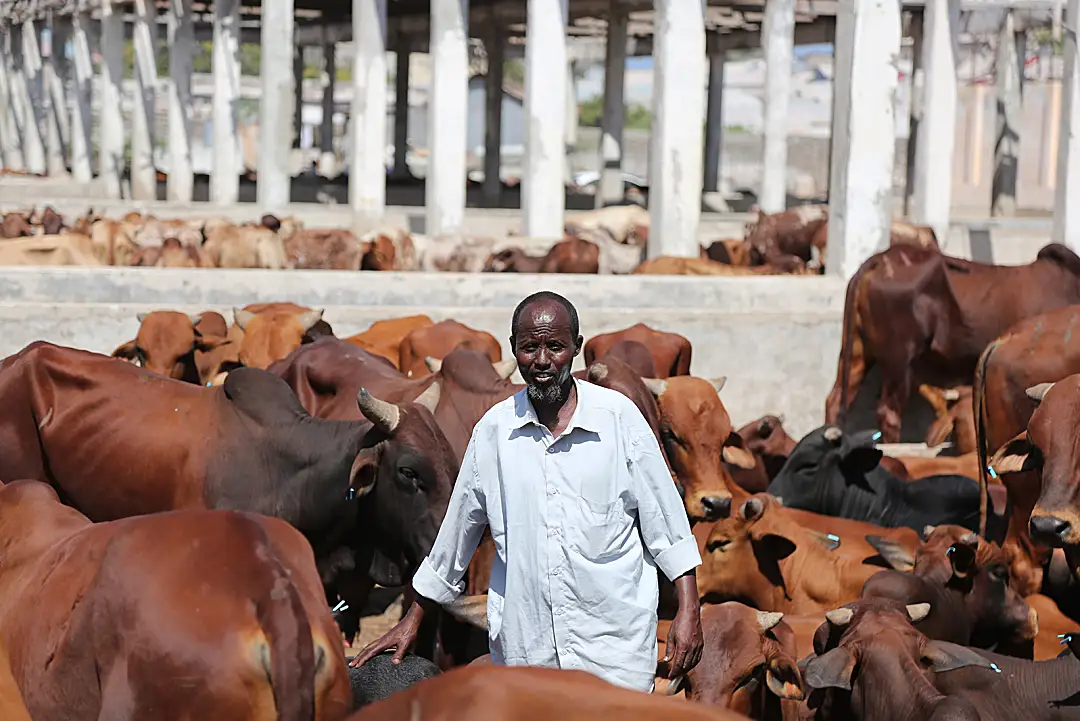Insights
COVID-19 is Showing Us How Market Systems Can Help Build Resilience

In Somalia, the GEEL program adjusted its agriculture and economic growth activities to minimize the disruptions of the COVID-19 pandemic. Photo from USAID Somalia GEEL Project
The COVID-19 pandemic has laid bare several truths about many aspects of our lives: the critical importance of public health, the consequences of social and racial inequities, and even how wildlife trafficking plays a role in our health and wellbeing, to name just a few.
One emerging truth that has not been getting as much attention during this crisis is that our agricultural market system – both domestically and globally – can actually be a driver of resilience, buffering us from the ripple effects of shocks and stresses such as COVID.
In the international development world, a strong, inclusive agricultural market system has traditionally implied that the system would be able to persevere through shocks and even adapt so that the market continues to provide people with goods, services, sales opportunities, and employment. However, we’re now able to watch in real time how accurate that assumption has been, and how we can help market actors – particularly businesses – learn from this crisis to become more resilient in the future.
On the heels of our recent webinar on the topic, we asked three experts to weigh in on how market systems can drive resilience in the face of COVID and other shocks.
Kristin O’Planick, Market Systems Specialist, USAID Bureau for Resilience and Food Security
Resilience refers to the ability to manage adversity and change without compromising future well-being. Over the past couple of years, USAID and our partners have worked to develop the area of market systems resilience, building on market development and explicitly addressing the capacity of a market system to absorb, adapt, and/or transform in the face of shocks and stresses.
We still see this as an emergent space, full of experimentation and learning. However, as we all try to find solutions during the COVID-19 pandemic, we now have a global use case for this way of thinking and working.
Simply put, market systems are an integral part of the ecosystem on which resilience programming is focused on strengthening. COVID-19 has created short-term and long-term challenges in the countries where we work, including unprecedented travel restrictions, lockdowns, marketplace closures, and stay-at-home orders.
While the pandemic is affecting businesses of all sizes, small- and medium-sized enterprises, which are the lifeblood of many emerging economies, are being hit the hardest. In fact, the African Union estimates 20 million formal jobs are at risk in Africa alone.
USAID and our partners can help businesses to pivot and flex to stay in operation during COVID-19. The idea is that by building resilience capacities during these challenging times, businesses will be able to not only recover but withstand concurrent or future shocks.
It will be important for us to continue to learn how COVID-19 alters market dynamics over time as everyone carries on in a COVID-altered reality. This also highlights that our market systems programs need to consider these types of “shock histories” in their analyses to understand market actor behaviors.
That said, our market systems programs have long been designed with principles in place to face a challenge like this head-on. With facilitation and adaptive management at the fore of the approach, our market systems programs have the relationships with the private sector to understand their shifting needs and priorities for survival and the agility to shift tactics accordingly.
My top resource for practitioners: I really like the USAID Bureau for Resilience and Food Security COVID-19 Learning Hub on Agrilinks as it is frequently updated with new resources.
Mohamed Adbinoor, Chief of Party, USAID Somalia Growth, Enterprise, Employment, and Livelihoods (GEEL) Project
When COVID-19’s effects began to reach Somalia, we knew we would need to quickly adjust our agriculture and economic growth activities not only because we need to ensure our staff and partners’ safety, but also because COVID-19 was sure to cause major disruptions within Somalia’s market system.
Through the USAID Somalia GEEL program, we’ve been working to ensure that Somalia’s essential market functions are bolstered so that financing can flow, businesses can maintain continuity, and families do not go hungry. Specifically, we are taking several steps to leverage finance and help the local private sector during and after COVID-19.
Much of our work during COVID has been centered around USAID’s guidance on market resilience. Working with our resilience team at RTI, we’ve been able to analyze which market activities are most critical to the resilience of Somali consumers, farmers, businesses, and the workforce, and then we focused on the continuity of those activities. For example, when food processors needed PPE to reopen, GEEL stepped in to help the businesses manufacture 500,000 masks and gloves. Or, when banana exporters couldn’t make their loan payments, GEEL worked with bankers to facilitate new terms so they could maintain their assets and workforce. This builds on our work during the 2018 emergency response to drought in Somalia, when we built on the Livestock Emergency Guidelines and Standards (LEGS) and helped partners protect supplies with popular solutions such as destocking, as well as more innovative mechanisms such as livestock leasing.
One major point to note is that, without our pre-existing relationships throughout the agriculture market system that we’ve developed through years of implementation, we would not be in the position we currently are to help our private sector partners withstand and “bounce back better” from the effects of COVID.
My top resource for practitioners: Given our focus on private sector engagement through GEEL, I’ve found this guidance from USAID to be useful.
Annah Latané, Food Security and Agriculture Specialist, RTI International
Market systems dynamically support farmers, households, and other market actors economically during normal times, but when hit with shocks such as COVID-19, markets need to adapt. To help farmers and households cope with any shock or stress, markets need to be able to reallocate resources, which they do when they help actors access new market channels, provide new services, draw on networks for resources to adapt their livelihoods, and do business with members of marginalized groups. The ability to adapt in an inclusive and competitive manner not only makes a market system resilient, but also helps producers and their households (that is, consumers) weather shocks and stresses.
RTI is currently conducting self-funded research analyzing how farmer networks have adapted in response to COVID-19 in Senegal, leveraging the existing networks we worked with through the former Feed the Future Senegal Naatal Mbay program. While that research is ongoing, focus group discussions thus far have indicated that the farmer networks are demonstrating strong resilience capacities based on the organizational development they received through the Naatal Mbay program, including leveraging market relationships, data, finance, and technologies. The farmer networks are rising to the challenge instead of waiting for assistance.
For those of us who are development practitioners, there are a few methods we can use to spur locally led recovery. First, there is a need to help local partners assess their situation so they can make the right choices. During a shock, it’s hard to know where to get information, or how to validate that information. We should incorporate these skills into our everyday programming so that people and businesses can increasingly make evidence-based decisions, including during shocks. Second, we should prioritize adaptation and flexibility as key capacities to develop. Focusing on the ability to adapt, instead of on the adoption of a single improved technology or practice, will likely be more broadly useful during a shock, particularly one such as COVID that was not anticipated.
My top resource for practitioners: I highly recommend this post from USAID’s Global Development Lab, which also references the Principles for Digital Development.
Disclaimer: This piece was written by Mohamed Abdinoor (Chief of Party), Annah Latane (Research Food Security and Agriculture Specialist), and Kristin O’Planick to share perspectives on a topic of interest. Expression of opinions within are those of the author or authors.



